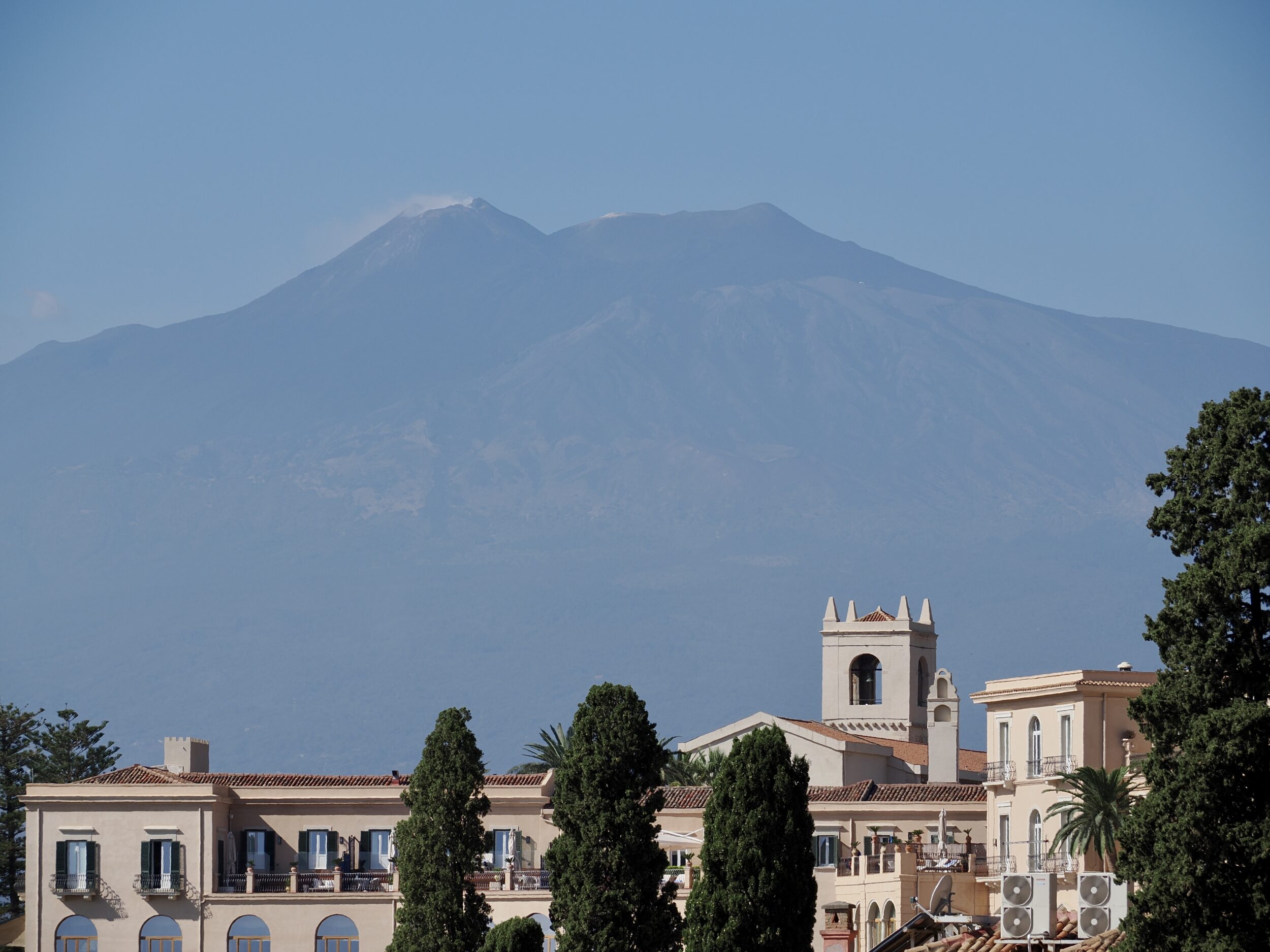Deploying a longer lens enables one to convey just how dramatically Etna towers over and dominates its vicinity.
This post’s photo involved a 200mm lens; the previous post’s was taken with a 30mm.
(it is generally reckoned that a “regular” 50mm lens delivers the closest approximation to a naked-eyed human’s field of view and sense of scale)
The building common to both images is Taormina’s San Domenico Palace, which is now a hotel.
A highly active volcano can frequently – sometimes, very suddenly – gain or lose a substantial amount of its altitude and/or volume, and its silhouette changes, accordingly.
Measuring Etna’s height is intrinsically difficult; if you “look it up”, you will find many different “answers”.
Even if today’s measurement was “dead right”, erosion, landslides, collapsing crater rims – and whatever “building” or “demolition” each new eruption delivers – will soon make it “wrong”.
The last “major” eruption, in 2021, was “constructive”; it boosted Etna’s elevation by circa 30 metres.
Etna’s current high point is probably a little more than 3,353 metres/11,000 feet above sea level.
It is generally reckoned this is the greatest elevation Europe’s biggest active stratovolcano has attained in at least the last two thousand of Etna’s circa half a million “active” years.
(photo is ©️ Doug Spencer, taken in Taormina at 10. 55 am on 03 October 2023)

Oh, to be in Sicily. Check my partner, Marisa’s website.